Subwoofers: what are they and what are they for?
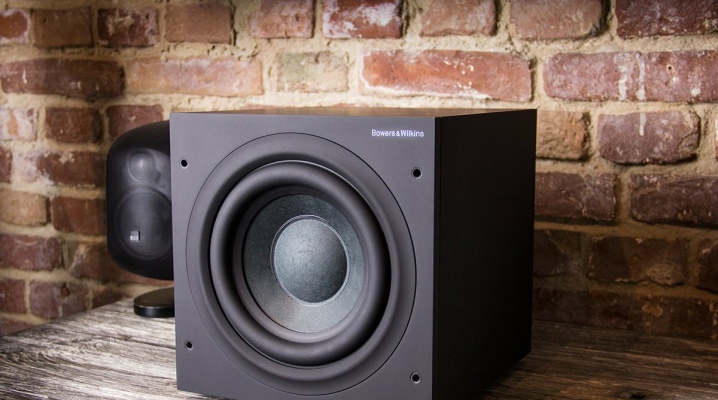
Today, few people use an audio system and home theater without high-quality low frequencies. To get surround sound and not overload the speakers, connect an additional speaker system called a subwoofer. This device is presented on the market by a huge selection of models, each of which differs not only in design, price, technical characteristics, but also in the method of connection.
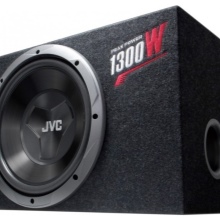
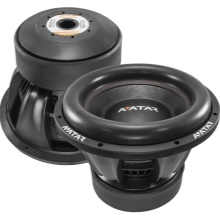
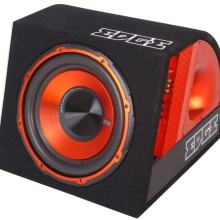
What it is?
A subwoofer is a speaker that converts the low frequencies of sound waves. It does not act as an independent acoustic device, but is considered only an addition to stereos. To listen to most music tracks that do not have bass, there is no need to purchase a subwoofer.
This means that this device is suitable exclusively for those who like to watch movies with powerful special effects and listen to heavy music (for example, rock). It is in such cases that an additional device to the system is required, capable of imparting special resonance and volume to the sound.
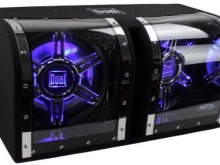
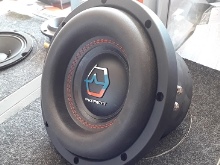
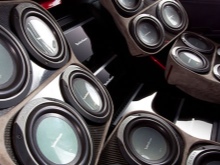
The main advantages of subwoofers include certain characteristics.
- Ergonomic Equipment of this type takes up a minimum of free space and can be placed anywhere.
- Ease of use. The device comes with a remote control, thanks to which you can adjust the sound parameters in accordance with the musical style of the song. In addition, connecting a subwoofer is easy, everyone can handle it.
- High quality sound. There are no extraneous sounds during device operation. The design of the equipment provides for magnetic protection of sound waves, so their distortion is completely excluded.
- The ability to synchronize with a laptop, computer or TV. Thanks to this, you can comfortably enjoy watching your favorite movies or listening to music.
- A chic choice of a lineup. Manufacturers produce various subwoofers that differ not only in size, but also in performance. On the market you can find both budget and luxury models.
As for the shortcomings, there are few of them. The main disadvantage is the need for additional purchase of an amplifier, which can take up a lot of space. In addition, some models do not provide the ability to adjust the cutoff frequencies.
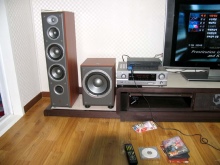

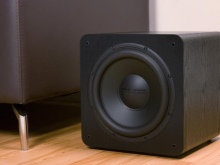
What is it needed for?
The subwoofer is not considered a necessary element in the speaker system, since it is only needed when you want to get powerful lows. Nevertheless, such a speaker will perfectly complement any stereo system and turn it into a good home theater... Typically, a subwoofer is used for watching movies and listening to music. Sound effects are more realistic thanks to the rich bass that the device reproduces.
In addition, subwoofers are often installed in concert venues, dance floors and movie theaters.
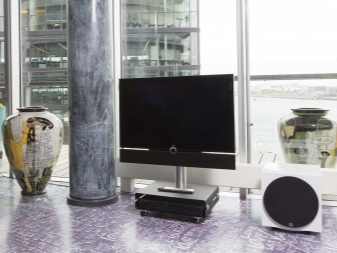
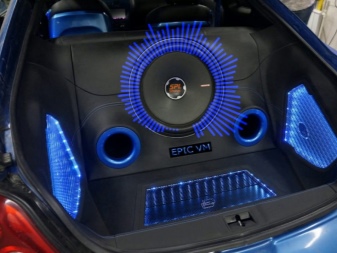
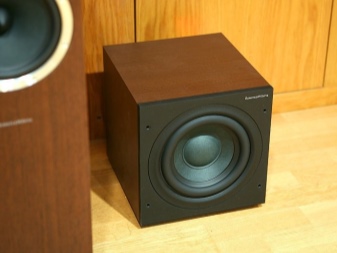

Device
A subwoofer is a device with the ability to convert the frequency of a signal into air vibrations that are perceived as sound. It is simple and consists of certain elements.
- Suspension. With this component, the cone is attached to the basket (speaker cabinet).The suspension can be made of different materials, which affects its strength and elasticity.
- Mounting ring. It is used as a seal, in some models it secures the suspension to the basket.
- Terminal. Acoustic wires from the amplifier are connected to it. There are subwoofers that do not have a terminal; they are produced with a direct connection.
- Voice coil. It is placed between the top flange and the core (where the magnetic field is generated). The coil looks like a sleeve with a wound copper wire. The coil is connected to a diffuser (a device that creates air vibrations), he sets it in motion.
- Dust cover. Protects dust from entering the voice coil gap.
- Centering washer. Secures the coil in the gap.
- Magnetic system. The magnet is usually made from special ceramics or special metal alloys. The power of the built-in speaker directly depends on its material of manufacture and weight. The magnet is positioned around the core and is attached between the bottom and top flanges.
In addition to all of the above, each model has ventilation holes to remove air and protect the voice coil from overheating.
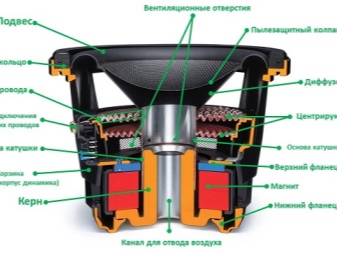
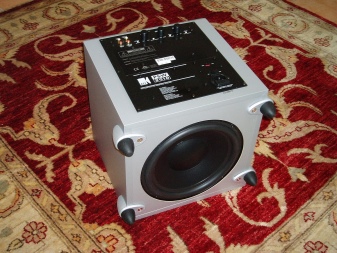
The output of the device wires is carried out from the coil along the centering washer. This eliminates the appearance of extraneous sounds during the operation of the column.
Species overview
The modern acoustic equipment market is represented by a chic assortment of subwoofers, which are very popular in home use. Moreover, each model differs in technical characteristics and design features, which must be taken into account when purchasing this device.
For example, on sale you can find both a simple wireless subwoofer designed for connection to a home theater, computer, and a professional concert one. The first type usually has standard features, while the second has a built-in amplifier and a wide range of settings.

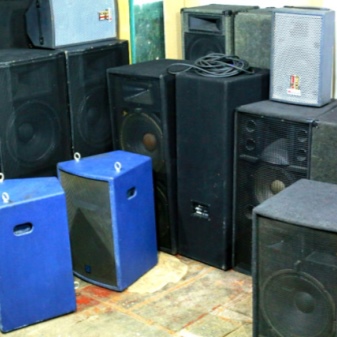
In relation to the power amplifier
All models of subwoofers differ in the presence or absence of an amplifier. If it is built-in, then it is an active subwoofer, and when it has to be purchased and connected separately, such a subwoofer is called passive. Devices with a built-in amplifier are more common in the market as they are ideal for installation in cinemas and home theaters. Active subwoofers, in addition to the amplifier, have a frequency regulator, two input connections and a phase switch in their design.
Thanks to the frequency control, you can independently set the sound range.
The advantage of active subwoofers is ease of use. The device has a built-in amplifier, and there is no need to additionally spend on its purchase and to connect individual components. Setting up in these models is straightforward. As for the shortcomings, such subwoofers are characterized by average quality, for their installation you need to additionally stretch two cables (signal and power), in the event of an amplifier breakdown, it is difficult to find a replacement for it, and in some models the auto-on and off system does not work well.
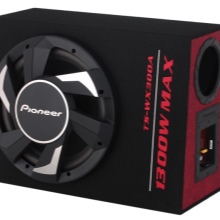
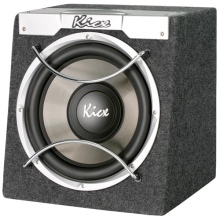
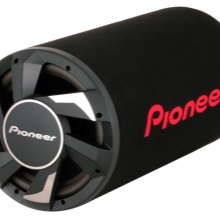
Passive subwoofers are available both with an external amplifier and separately. A dedicated amplifier is considered the best, since when installing the system, it becomes possible to use free reverse channels. This type of device requires more power, therefore, if it does not have a built-in high-pass filter, then the signal cannot be filtered qualitatively.
The advantages of such devices include the presence of massive power supplies, the ability to connect to various acoustics and an affordable price. Cons: complicated installation and additional costs for purchasing an external amplifier.

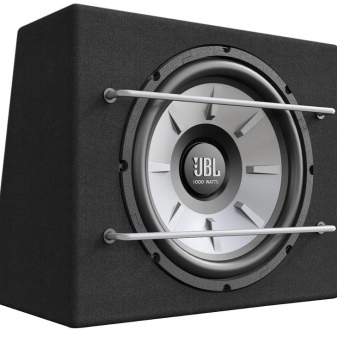
By design
The box (case) of the subwoofer, where the speaker is installed, allows you to give the sound waves the desired parameters in frequency and dynamics. Manufacturers produce devices with different drawer characteristics. The most common options are presented below.
- Closed housing. The speaker in such models is completely enclosed, therefore completely isolates the rear sound wave. The main advantages of closed box subwoofers: simple design, small size, excellent impulse characteristics, convenient control. Disadvantages: low efficiency, high lower frequency limit, which is rarely 30 Hz.
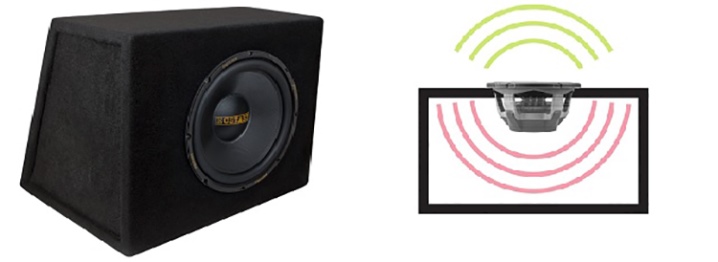
- Bass reflex. The speaker in such models is located in a box with a tunnel. The bass reflex port and speaker work together to create an oscillatory system that emits additional sound energy from the rear wave. Loudspeakers in this form of the device are installed in the front wall of the box, sometimes perpendicularly. The advantages of such models include: high performance, low frequency response, loud sound. Cons: large size, poor impulsive characteristics.
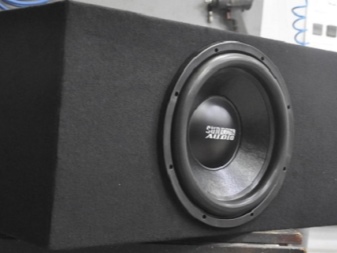
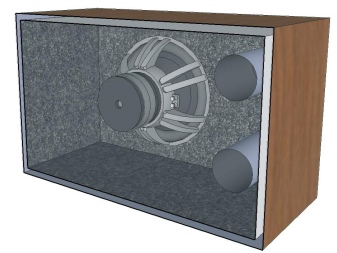
- Band-pass loudspeaker. The speaker in this type of device is installed in two chambers (from the front and back of the case) in such a way that the rear is in a closed box, and the front is in a box with a port. Thanks to this design, it is possible to achieve fairly low frequency response boundaries with a minimum level of sound distortion. The disadvantages of such subwoofers: a tendency to monotonous bass (this is usually observed in cheap models), due to the constant high pressure on the speaker, its working parts quickly fail.
In addition, the device has weak impulsive characteristics, the sensitivity and bandwidth are proportionally related.
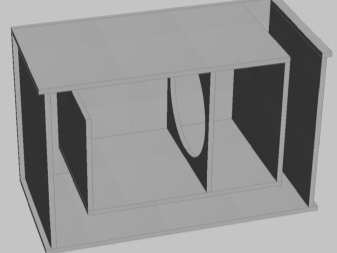

How to choose?
Before you buy a good subwoofer, you need to decide on its purpose and study the main technical characteristics that it must meet. Experts recommend paying attention to important parameters when buying a device.
- Frequency. This is one of the most important indicators on which the acceptable sound range depends (the speaker's ability to generate a frequency range). On sale there are subwoofers with low bass from 20 to 40 Hz, medium - from 40 to 80 Hz and high - from 80 to 160 Hz. For home use, you can buy a device with frequency fluctuations up to 60 Hz.
- Power. The higher the SPL, the better the playback quality will be.
- Crossover frequency. This indicator indicates the maximum ability of the subwoofer to reveal the sound when playing songs of different frequencies. Its optimal value is considered to be 70 Hz. To increase this frequency, you need to additionally use the processor.
- Sensitivity. It should not exceed 90 dB. The decrease in the load on the amplifier and the absence of distortion in sound depend on the sensitivity.
- Speaker dimensions. Manufacturers produce a device with woofers, the size of which ranges from 25 to 30 cm. However, there are models whose diameter is reduced to 20 cm. They are usually purchased for installation in cars.
- Weight and dimensions of the device. The further location of the subwoofer will depend on these indicators, especially owners of small apartments should take this into account. As for the weight, the more it is, the better the technique is, since powerful speakers are usually equipped with heavy magnets.
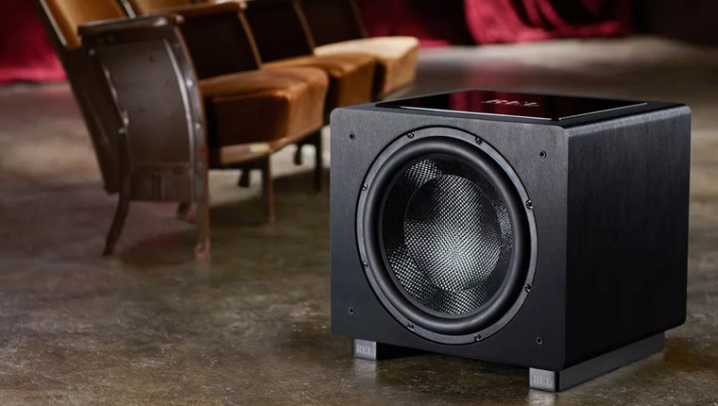
How to connect correctly?
After the issue with the choice and purchase of a subwoofer has been resolved, it remains to select a place to place it and carry out the installation. Bass problems are often not due to the technical specifications of the device, but due to improper installation. Reflections from the walls of the room will significantly weaken the sound, so you need to know where is the best place to place the device. To do this, turn on any test recording and move the subwoofer until you get excellent sound. There may be several such places in a room.
To reduce the likelihood of the formation of standing waves and significantly increase the area of the device location, it is advisable to close the walls in places where the sound is reflected with a special material. As for connecting a subwoofer to an acoustics system, the simplest thing is an active subwoofer. Its connection does not require separate cabling and amplifier installation. The connection procedure is only to connect the subwoofer cable to the player using the SubOut connector.
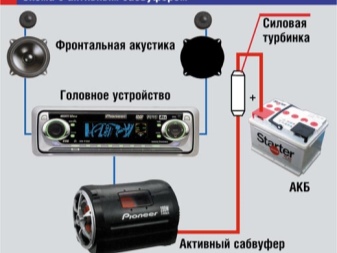
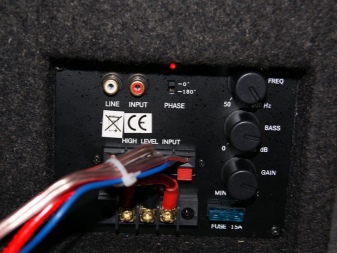
Connecting a passive subwoofer is more complicated. First of all, you need to do crossover switching (a device that provides frequency division across ranges). The connection diagram is as follows: the subwoofer is connected to an amplifier, which must be connected to a playback device. Power wiring runs from the battery through a fuse with mandatory polarity.
The installation must be carried out with the power off, this will help to avoid a short circuit.
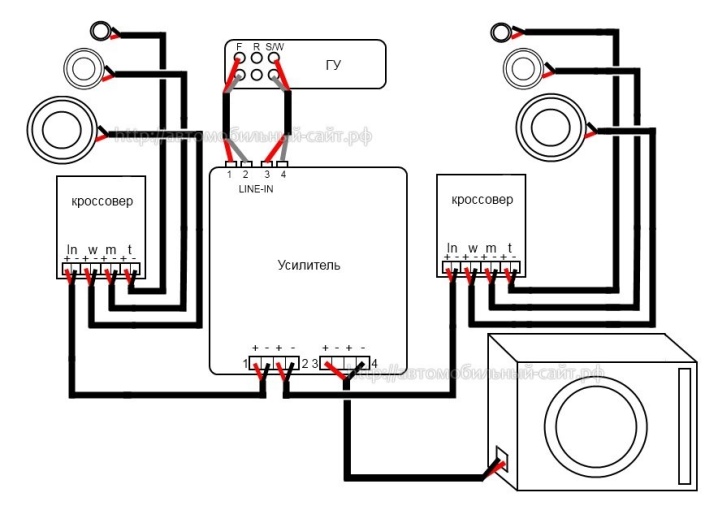
The final stage of installing both active and passive subwoofers is considered to be the sound adjustment. To do this, you need to perform certain actions.
- Turn on the LPF filter on the amplifier, it will be needed for transmission to the low-frequency speaker. In addition, by enabling this function, it is possible to avoid the appearance of infrasound and damage to the device.
- Next, you need to turn on the high-pass filter HPF. Its indicator should not exceed 90 Hz.
- After that, you should adjust the sensitivity by selecting the level or gain item on the device. On the amplifier, you need to set the maximum volume and smoothly turn the knob until distortion appears. Interference can often occur due to improper wire routing, so the location should also be checked. Then, after inserting a test disk, check the sound volume.
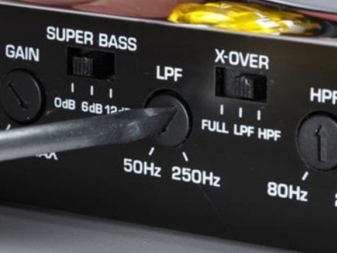
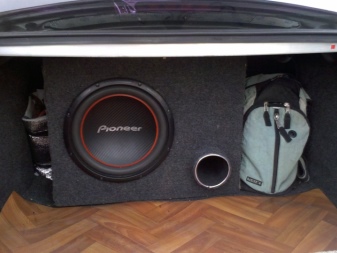
For information on how to choose subwoofers, see the next video.









The comment was sent successfully.